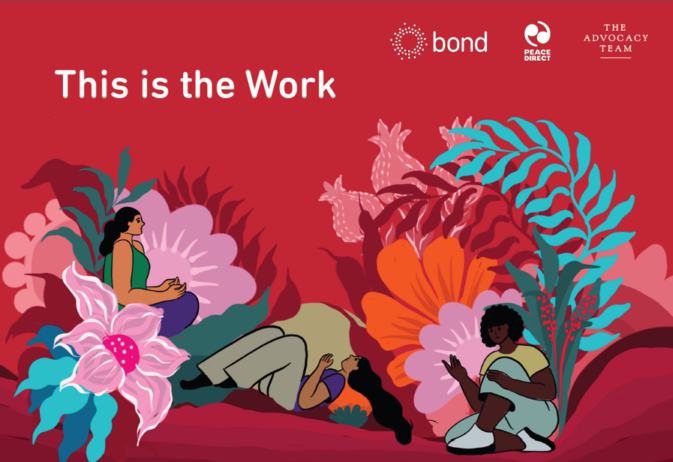A new era for INGO communication strategies?
Following the turbulent times of coronavirus, communications teams across the international development sector are now getting to grips with a “new normal”of hybrid work, a renewed focus on climate change and unfortunately, navigating a new set of crises.
It can be easy amongthe inevitable fire fighting to lose focus on the big picture, on our long-term communications goals and how we get there. Perhaps it’s not surprising then that following a survey of working group members, the most important topic identified was “developing communications strategies”. The newly reinvigorated working group kicked off 2022 with a workshop dedicated to sharing the challenges we are facing when it comes to strategy and collectively exploring possible solutions, which this article will dig into.
Establishing communications as a strategic function
Some members pointed towards an identity crisis amongcomms teams. Often seen as a service delivery by colleagues outside of marketing and communications, this can cause difficulty when trying to establish themselves as strategic partners, with a seat at the table to inform organisational strategy.
This can lead to a divergence in external messaging and engagement. Fundraising activities, advocacy and business development may not be well aligned, at best, or contradictory, at worst. Overcoming this requires integrating and providing direction to the overall organisational narrative but that’s easier said than done. It’s achallenging task, hampered by siloed departments and made more difficult by a lack of central communications strategy for everyone to rally behind.
Strategy itself is no silver bullet though. As many working group members expressed, developing it is one thing, sticking to it is another, as new opportunities and demands present themselves, leading to deviation from pre-agreed plans.
Emerging solutions
To be seen as a strategic partner, communications colleagues need to define what communication is and why it is important to the organisation’s goals. It sounds obvious but evidence from our members highlighted disconnects between internal perceptions of communications and the real value that we can add as experts.
Identifying the priorities of senior leadership across the organisation and where these intersect with communicationscan help to inform a strategy that both unites different internal functions and adds direction to our external engagement efforts.
Subscribe to our newsletter
Our weekly email newsletter, Network News, is an indispensable weekly digest of the latest updates on funding, jobs, resources, news and learning opportunities in the international development sector.
Get Network NewsTaking this one step further, many members highlighted the benefits of shared campaign/event calendars. If properly embedded with teams and collectively agreed upon, these can prove powerful tools to improve collaboration between different stakeholders and agree on focus areas. Using regular review and reflection periods throughout the year also helps teams to stay on track and ensure their resources are focused on activities with the biggest potential value.
Case study: Applying an integrated approach
Practical Action is no stranger to some of these challenges and has been on a journey of integrating marketing and communications activities to overcome them, and ultimately, establish a department with a more strategic role in the organisation.
Since initially delivering more integrated supporter fundraising campaigns, the team have now been tasked with focusing on wider external engagement activitiesto ensure these maximise reach to key professional audiences (B2B i.e. aid agencies, multi-lateral funds and trusts, foundations, corporates, governments, consultancies, and development experts/practitioners) in support of organisational objectives.
This involved the communications team acting as both lead and convener to develop a new strategy, collaborating with senior leadership, brand, policy, and business development teams. But with a new challenge and a wider remit, greater efficiency was needed.
Similar to supporter marketing, external engagement teams had also been working in siloes. Good work was being done by talented colleagues but this was happening across disparate activities (advocacy, business development, corporate comms, PR, social media). With some more coordination, operations could be smoother and activities more impactful.
The hypothesis was simple: greater alignment across communications builds a more coherent position. Therefore, to maximise and amplify all engagement activities, efforts needed to be aligned towards a common goal. Plus, no one has unlimited resources, so to be effective also means being efficient. Making everything as multi-purpose as possible.
This was crucial to positioning Practical Action as an attractive partner and required a new communication strategy and ways of working, including the following important steps:
- Mapping key audiences across teams (understanding who they are, why they’re important, how we’re positioning with them now and how we want to be known by them)
- Messaging to support our positioning, followed by agreed storylines to join up our different areas of work (meeting the needs of our different audience groups)
- Developing a marketing calendar, using key points/date drivers to pin down “key moments”of integration. Hinged on an external events plan and treating each as a “mini-integrated campaign”to rally around. Moving from purely advocacy-focused activities to seeing these as broader opportunities for profile raising, and business development, as well as influencing
- Aligning content requirements across supporter and professional audiences to maximise efficiencies. Developing KPIs to measure success
The new communications strategy ultimately aimed to help secure more funding and build new long-term partnerships, so the strategy was viewed through a funnel approach to maintain our focus, clarify the role of communications and socialise this internally.

Fig 1. Funnel model
It is still early days for this innovative, new approach but promising results have been seen so far. Conversations have been opened with new audiences, engagement has improved across channels (particularly on our priority social media platform, LinkedIn), new relationships have been built and coverage secured across key media (including The Guardian and The Independent), along with enhanced ways of working internally.
This didn’t come without challenges along the way. Socialising new narratives and ensuring different teams are speaking with one voice is a continuous process. Being reactive to capitalise on new opportunities for profile raising requires agile management capacity building. Resource planning is crucial, requiring a continuous focus on prioritisation. Comfort needs to be found in complexity, especially if developing new processes and delivering at the same time. Finally, all this means very little without measuring effectively – understanding the KPIs to measure the performance of the strategy is crucial.
In the end, breaking new ground in integration across communications comes down to one thing – collaboration. That meanscontinuous communicationsbetween multiple teams (with central coordination), alignmentbehind messaging and strategy, and finally, patience. New approaches, strategies, and ways of working take time. Good grace amongcolleagues goes a long way.
Future areas of exploration
The rich discussion at the workshop identified several other key themes and challenges being experienced by communications professionals in international development. We will be digging into the below topics even further at future events, meetings and of course, on our new communities platform (helpful tools shared during the workshop are also linked below):
- How to implement an integrated strategy, such as the approach outlined in the Practical Action case study:
- How to manage this efficiently
- Practicalities of aligning plans and integrating communications
- Useful tools to help teams deliver
2.How to navigate the building of cohesive messaging across geographic siloes
3. Balancing ownership of messaging between Global North/South colleagues to address power imbalances and create unity
4. How to effectively decolonise communications
5. Achieving ambitious communications goals on a shoestring budget, with a focus on:
- Funding for software/tools (useful free resources: stock images, Canva, Mailchimp)
- Developing strong relationships with the media and securing coverage as a small organisation (see this useful guide from Bond)
- Managing surge capacity within a small team
Get involved!
The Bond Communications working group is here to help our members achieve their goals through learning, networking and unpacking challenges and solutions together. Members can share their thoughts on this article, and communications strategy and help inform what we cover at future workshops over on the new communities platform.
We will possibly be hosting a face-to-face event (remember those?) in August and another virtual workshop in September, so look out for details on these coming soon.
If you’re a member of Bond but not part of the Communications working group and would like to join the conversation, we’d love to have you with us!
Category
News & viewsThemes
Communications



